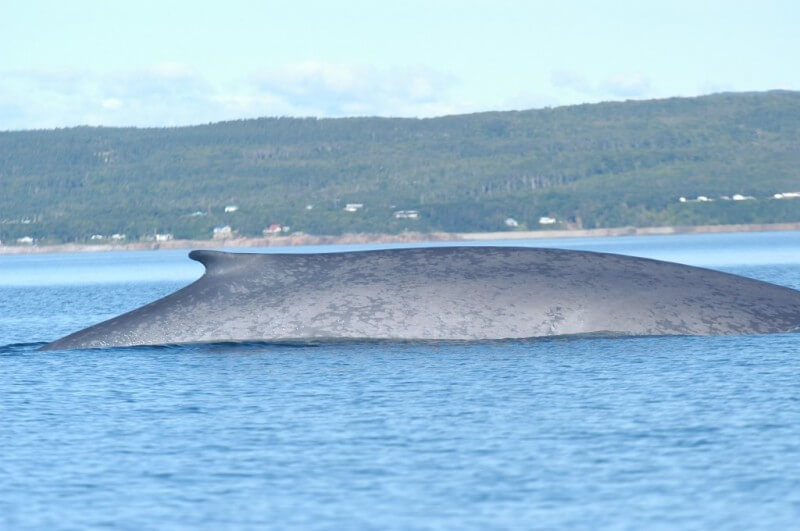Feeding
The blue whale is a gulper, feeding essentially on small planktonic crustaceans called krill that live in schools. It consumes up to four tonnes a day, which corresponds to about 4% of its weight.
On the surface
Breathing sequences generally consist of 3 to 4 blows. Blue whales sometimes feed on the surface by means of characteristic manoeuvres, namely rolling onto their sides, revealing their expanded throat, pectoral fin and one tail fluke. When they dive, certain individuals (about 15-18% of those frequenting the St. Lawrence) raise their tails.
Diving
Dives generally last 10 to 15 minutes, and occasionally up to 30 minutes. They can reach depths of 200 m, with most being made between the surface and about 100 m, the depth at which their prey are found during the day.
Social
Rather solitary and nomadic, blue whales travel in pairs or in small temporary groups. The nature and duration of these associations are not known. In the St. Lawrence, it has been observed that stable pairs – lasting a day or even several weeks – are formed beginning in July. These pairs are most often male/female duos. This pairing is believed to be a precursor to reproduction, which takes place in winter.
Vocalization
These vocalizations are composed of low-frequency (11 to 125 Hz) sounds lasting between 1 and 13 seconds. Infrasounds (8 to 20 Hz) consisting of a single note can be as long as 30 seconds. They are very intense and their volume ranges between 186 and 198 dB. The sounds may be organized in sequences and repeated over variable periods of time. They travel hundreds of kilometres in the deep waters and can serve either as a means of communication for widely dispersed animals in the ocean, or may help whales “read” the seascape and underwater relief to orient themselves during their long journeys. They may play a role in their mating rituals. Geographic variations in sound patterns may be linked to different stocks or sub-populations. In the St. Lawrence, the uniqueness of blue whale vocalizations suggests an adaptation to the high sound levels of their environment caused by maritime traffic.









